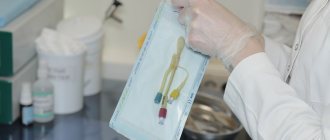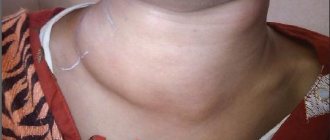Exudative sinusitis, what is it: features of the disease in adults and children
Sinusitis begins with swelling of the mucous membrane and inflammation of the sinus tissue. Often during this period there is a decrease in the permeability of blood vessels. In some cases, for example, if treatment for the disease was started immediately, sinusitis ends in the first stage. If this does not happen, then there is a possibility of a violation of the integrity of the vascular walls, which leads to the release of liquid secretion - exudate.
Exudative sinusitis: symptoms and treatment
Exudative sinusitis belongs to the second stage. It is characterized by the presence of secretions that accumulate in the sinus, causing new symptoms. Typically, the exudate is initially watery or mucous in nature. If measures are not taken, then sinusitis goes into a purulent stage, which is more dangerous and difficult to cure.
Interesting to know! Swelling and inflammation often develops on only one side. In rare cases, patients are diagnosed with bilateral exudative sinusitis.
It should be noted that exudative forms of sinusitis occur in both adults and children, and it is more difficult for the latter to endure the disease.
https://youtu.be/XEJnTSji8Ao
Why does the disease have this name?
So, first, let’s try to figure out what exudative sinusitis is and for which groups of the world’s population it is most typical. In fact, the disease is one of the forms of the inflammatory process, at the epicenter of which an accumulation of fluid is formed, which is called exudate. It is from here that the disease got its name. The nature of the exudate can be different, ranging from composition to color. An important factor that influences the nature of the discharge is the form of the inflammatory process. In addition, what bacterium caused the development of the purulent process can have an impact.
The classic development of the inflammatory process in the body of any person goes through three successive stages, with which forms of sinusitis are also associated. In the genesis of the inflammatory process there are:
- Alteration stage. During this period, damage occurs to tissues exposed to pathogenic factors, as a result of which the inflammatory reaction mechanism is triggered with the release of biologically active substances (mediators);
- Exudative stage. It is characterized by an increase in the permeability of the vascular wall, as a result of which intravascular fluid (plasma) enters the intercellular space, causing edema.
- The proliferative stage is characterized by accelerated cell proliferation, an increase in their size, and neoangiogenesis.
Its manifestation will depend on which process predominates during inflammation: exudation or proliferation. Increased mucus production in sinusitis is precisely due to the prevalence of exudative reactions.
There are a lot of types of sinusitis, however, with incorrect and untimely treatment, you can encounter such an unpleasant consequence as the development of a chronic form of sinusitis. It is unlikely to be cured and the only thing that can be done is to achieve stable remission.
Types and forms of the disease
Based on the type of fluid released, the following types of exudative sinusitis are distinguished:
- catarrhal This option belongs to the initial stage and is the easiest of all. Catarrhal sinusitis is accompanied by severe swelling of the mucous membrane and the release of liquid, transparent exudate;
- serous. The discharge becomes cloudy, the deeper layers of the mucous membrane are infiltrated;
- purulent. There is purulent discharge. The mucous membrane is completely infiltrated with leukocytes. The severity of symptoms is high. Often the development of purulent sinusitis is associated with the penetration of bacteria into the sinus cavity.
Exudative sinusitis in children is more often catarrhal, while in adults purulent and serous forms predominate.
Important! These types of sinusitis can be stages of one process or occur as an independent disease.
The disease can be acute or chronic. Acute exudative sinusitis lasts on average 1 week (in children – 10-15 days), but can last for a month. Its symptoms appear suddenly and disappear completely after a specified period.
The diagnosis of chronic exudative sinusitis is made if the inflammation does not go away after 6 weeks. Its distinctive feature is a persistent dysfunction of the nose, with a small amount of discharge and periodic exacerbations of symptoms that do not differ from the acute form of the disease.
Depending on which side of the face the sinus is inflamed, left-sided and right-sided exudative sinusitis are distinguished. There is no significant difference in their treatment.
Causes
Most often, exudative sinusitis occurs as a complication of a viral or bacterial infection. The cause of the development of the disease can also be pathological changes in the mucous membrane of the nasal cavity and oropharynx, as well as a weakening of general immunity. Therefore, the disease is often diagnosed against the background of the following conditions:
- tonsillitis, adenoiditis, pharyngitis and other infections of the oropharynx;
- acute and chronic rhinitis of bacterial etiology;
- diseases of the teeth and gums (including gingivitis, caries, pulpitis and periodontitis);
- allergic rhinitis and increased susceptibility of the body to allergens in general;
- deviated nasal septum and other anomalies in the structure of the nasal cavity;
- injuries to the nose and sinuses, foreign bodies;
- taking potent medications that weaken the body’s defenses or suppress the immune system;
- general state of immunodeficiency;
- harmful working conditions (work in rooms with dusty and polluted air).
In this case, viral infections cause the development of only the acute form of sinusitis, while chronic inflammation develops on the mucous membrane weakened by bacteria.
Causes of exudative sinusitis
Sinusitis can occur for several reasons. For most, it develops after suffering from influenza, ARVI, rhinitis and ENT diseases of the throat. In children, sinusitis occurs against the background of measles and scarlet fever.
Also, the cause of exudative sinusitis can be:
- inflammatory diseases of teeth;
- allergy;
- injuries of the upper jaw and operations in the nose;
- congenital or acquired anomalies of the nasal cavity.
The purulent form of sinusitis is caused by bacteria such as Moraxella, Haemophilus influenzae, Staphylococcus and others. In some cases, bacterioscopy reveals yeast-like fungi. Bacteria and fungi enter the nose with dirty hands, water, or simply through the air.
Hypothermia and decreased reactivity of the body are provocative factors for the development of sinusitis.
Causes of the disease
Sinusitis in exudative manifestations can be caused by many factors:
- Allergens that enter the body and provoke the development of swelling and inflammation in the mucous membranes of the paranasal sinuses. Mucous secretions are actively produced and fluid accumulates. This may become the basis for connecting to the infection process.
- Viruses, among which the provoking factor can be influenza, rhinovirus, scarlet fever. The disease can develop when the body is affected by coccal bacteria - pharyngitis, tonsillitis, adenoiditis. Subsequently, infections of a complex type are often added - moraxella, streptococcus, staphylococcus. Therefore, it is not surprising that acute sinusitis of a viral or bacterial nature rapidly progresses, against its background mucus and pus are formed.
- Weakness of immune defense due to drug therapy, exposure to harmful environmental factors.
- Injury in the nasal area, deviated septum as a result of mechanical action.
- Entry of foreign objects into the nasal cavity, which is especially typical for young patients. But even in adults, dust and soot can accumulate, and foreign objects themselves get into the sinuses during treatment of the teeth of the upper row.
- Inflammatory changes in the oral cavity, for example, with caries or gum disease.
Symptoms of exudative sinusitis in children and adults
The clinical picture of inflammation depends on the type of disease. Typically, symptoms of exudative sinusitis are blockage of the nasal passage on one or both sides, as well as discharge from the nasal cavity. It is the discharge that is a sure sign of exudative forms of sinusitis. At the initial stage, the mucus is white or transparent. When pus forms, the discharge becomes viscous, changes color to yellow or green, and an unpleasant odor appears.
In addition, signs of exudative sinusitis in both adults and children may include:
- pain and discomfort in the nose and the area around it. The pain may have varying intensity and increase when tilting or turning the head;
- elevated body temperature (more common in children);
- complete or partial loss of smell;
- weakness throughout the body;
- diffuse headache.
The most pronounced symptoms are observed in patients in the first 2-3 days. Then there is improvement. The purulent form is more severe, with severe pain and deterioration in the person’s general condition. Children suffer from the disease even more difficult than adults. Babies can be capricious, cry, refuse breastfeeding or food. In severe cases, there is a strong increase in temperature.
Signs and symptoms
The initial stage is characterized by signs of ARVI. They are represented by the following symptoms:
- discharge of mucus from the nose;
- apathy, weakness;
- labored breathing;
- temperature;
- sore throat;
- headache.
Gradually, doctors note the addition of signs of an acute form of the disease to the main symptoms of exudative sinusitis:
- acute headaches in the temples and forehead;
- pressure under the eye sockets;
- change in voice timbre, manifestation of nasality;
- swelling of the eyelids;
- nasal discharge (yellow, clear, green);
- feeling of discomfort in the bridge of the nose;
- nasal congestion;
- weakness;
- insomnia;
- increase in temperature (sharp);
- loss of appetite;
- cough caused by mucus flowing down the throat.
The purulent stage of the disease is characterized by the following symptoms:
- chills;
- heat;
- signs of intoxication;
- prostration.
The chronic stage of the pathology is considered the most dangerous; it is very difficult to cure. This stage of the disease is characterized by the following symptoms:
- constant runny nose. It is almost impossible to cure it. Even the use of vasoconstrictor medications does not give any result;
- nasal congestion. This condition occurs randomly, it can affect one side of the nose, which depends on the type of sinusitis (left-sided, right-sided). Sometimes chronic inflammation is bilateral. The patient breathes only through his mouth and does not perceive any odors;
- cough caused by mucus running down the wall of the throat;
- pain in the eyes. Swelling of the area under the eye sockets appears. It is painful for the patient to blink, the eyelids swell, and conjunctivitis may occur.
Symptoms of sinusitis
Diagnosis of the disease
At the first appointment, the doctor will examine the patient, perform a rhinoscopy of the nose and, if necessary, take tests of mucus or pus. You will also need to take a blood test. To confirm the diagnosis, an x-ray examination is sometimes prescribed. Using X-rays, the doctor identifies the location of inflammation and the amount of mucous secretion in the nasal cavity.
A puncture of the maxillary sinus is not necessary to diagnose exudative sinusitis. This disease is in most cases confirmed by typical signs, and puncture and puncture may be needed, for example, in patients with prolonged sinusitis and a poor response to therapy. To diagnose chronic or complicated sinusitis, nasal endoscopy is used, which allows you to examine the inside of the nose, as well as computed tomography.
Diagnostics
Before prescribing effective treatment, the doctor must identify the cause of the disease and the stage of its development. To do this, it is necessary to carry out a number of diagnostic procedures.
- Initial examination. When contacting an otolaryngologist, the patient is examined. At the same time, the doctor collects data on the course and possible causes of the disease based on the patient’s complaints.
- X-ray. Such a study allows you to obtain information about the presence of an inflammatory process, swelling of the mucous membrane, adenoids in the nose in children and other changes. Most often, such hardware diagnostics are sufficient to make a diagnosis and prescribe a course of therapy.
- CT scan. Based on the results of this examination, the doctor receives a three-dimensional image of the patient’s nasal cavity and sinuses. The advantage of computed tomography is that it does not require preliminary preparation and allows you to detect the disease even at the initial stage.
- Endoscopy. During this procedure, the doctor uses a medical device called an endoscope. A long flexible tube equipped with a mini-camera is inserted into the nasal cavity. The picture is transmitted to the monitor. This makes it easy to diagnose structural pathologies, since adenoids and polyps look like neoplasms.
- Magnetic resonance imaging. Such a diagnosis is recommended only in cases where previous methods did not help diagnose the patient.
How and with what to treat exudative sinusitis in adults and children?
Acute maxillary sinusitis of catarrhal and serous forms tends to resolve on its own. During therapy, agents are used that reduce the manifestations of the disease, namely swelling and inflammation, which provoke abundant release of exudate and its stagnation.
To treat exudative sinusitis, the patient is prescribed the following medications:
| TYPE OF MEDICINE | ACTION | DRUGS FOR ADULTS | DRUGS FOR CHILDREN |
| Antihistamines | Relieves allergy symptoms | Suprastin, Zyrtec | |
| Anti-inflammatory sprays | Eliminate inflammatory reactions | ||
| Vasoconstrictor drops | Reduce swelling of the mucous membrane | Nazivin, Naphazolin, Otrivin, ForNose | |
| Mucolytics | Thin the mucus | Rinofluimucil, Sinuforte | |
| Salt water antiseptic sprays | Cleans and kills germs | Aquamaris, Aqualor, Dolphin |
These drugs relieve swelling of the nasal mucosa, which reduces the production of exudate and improves the outflow of accumulated fluid. Thus, the sinuses are gradually cleared, and the disease goes away.
If the listed remedies are sufficient to treat exudative sinusitis of catarrhal and serous forms, then purulent inflammation can be eliminated only with antibiotics, and surgical intervention may even be required.
Both children and adults are primarily prescribed penicillin antibiotics - Augmentin, Azitrox, Amoxicillin. If the patient’s condition is severe or the first drug does not help, the doctor will replace it with another. Macrolides and cephalosporins, such as Azitrol, Sumamed, Zinnat, Cetyl, have a wider spectrum of action.
If the inflammation has prolonged and the pus cannot be removed from the sinuses in the usual way, the patient is prescribed a puncture of the maxillary sinus. The doctor makes a small hole in the wall of the sinus with a syringe, removes all the fluid, and then rinses the sinus with an antiseptic, anti-inflammatory or antibacterial agent. After the first puncture, a catheter is installed into the hole made in the wall of the sinus to carry out the following procedures for pumping out pus and washing the sinus.
It is important to know! A puncture is made for exudative sinusitis in adults and children over 3 years old.
After surgery, it is important to minimize the risk of recurrence and complications. To do this, you need to use antiallergic drugs and anti-inflammatory nasal sprays. As an alternative to a puncture, the patient can have pus pumped out using a pit catheter, but this procedure does not always give results in the treatment of exudative sinusitis.
Treatment
Treatment of exudative sinusitis and tactics are selected depending on the form of the disease. And the more advanced the disease, the more difficult it is to choose therapy. If for catarrhal sinusitis a minimal medicinal effect is sufficient, then the purulent form of the disease often requires surgical intervention.
Light form
The basis of treatment for the catarrhal form of the disease is vasoconstrictor drugs and antiallergic drugs. The main goal of drug therapy is to normalize the outflow of serous fluid from the sinus and reduce the production of mucous secretion. And this effect can be achieved only by removing the swelling from the mucous membrane. The following medications can be used for this:
- antiallergic drugs for oral administration - Zodak, Zilola, Cetrin, Alerzin;
- vasoconstrictors (decongestants) for irrigation of the nasal mucosa - Oxymetazoline, Rinonorm, Dlya Nos, Nazivin, Sanorin;
- isotonic salt solutions for rinsing - No-Sol, Avamis, Quicks;
- means for thinning thick mucus - Sinuforte, Neonox;
- drugs to reduce mucus production - Ipratropium bromide, Otrivin.
If a bacterial infection is suspected, the patient is prescribed antibacterial drugs. Today, penicillin antibiotics (Flemoclav, Amoxil, Augmentin) are mainly used in the treatment of sinusitis. As an alternative, if you are intolerant to penicillins, you can prescribe drugs from the macrolide group (Erythromycin, Azithromycin). In severe cases of sinusitis, the latest generation cephalosporins are prescribed (for example, Ceftriaxone - powder for intramuscular injection).
The following groups of drugs can be used as adjuvant therapy:
- non-steroidal anti-inflammatory drugs (NSAIDs) – Nurofen, Ibuprofen, Panadol;
- antiviral drugs - Cycloferon, Ergoferon, Viferon;
- antiseptic and antibacterial agents for topical use - Miramistin, Protargol, Bioparox;
- glucocorticosteroids for nasal use – Avamis, Nasonex.
When choosing a particular drug, the availability of indications must be taken into account. If there is no fever, and the patient’s condition is generally satisfactory, you should not take NSAIDs just because someone advised. The same goes for antibiotics and hormones.
Physiotherapeutic procedures will help increase the effectiveness of drug treatment and speed up the recovery process. Among them are laser treatment, magnetic therapy, UHF and “Cuckoo” rinsing. Particular attention should be paid to the last procedure, which allows you to wash out accumulated exudate from the nasal sinuses, and along with it pathogenic microorganisms that support the chronic inflammatory process.
Purulent form
The basis for the treatment of purulent exudative sinusitis is broad-spectrum antibacterial agents.
The first choice drugs are penicillin antibiotics, for example, Flemoxin or Amoxicillin. But if possible, you should start with drugs with clavulanic acid that are resistant to pathogenic microflora (Amoxiclav, Flemoklav and others). In addition to antibiotics, drugs with vasoconstrictor and antihistamine effects are prescribed. To facilitate the outflow of viscous purulent exudate, the patient is indicated for surgical intervention - puncture . The procedure involves puncture of the sinus and subsequent installation of a catheter. Surgical drainage allows not only to enhance the outflow of purulent contents, but also makes it possible to administer medications directly to the site of inflammation.
In most cases, sinusitis responds well to complex treatment. If the effectiveness of antibacterial therapy is low, it is necessary to conduct an additional examination to determine the true cause of the disease, since polyps or cystic neoplasms in the sinuses can give a similar clinical picture.
Physical therapy procedures in the treatment of sinusitis
For an additional anti-inflammatory effect, physiotherapeutic procedures are used at the initial stage - UHF, microwave, ultraviolet irradiation, ultrasound therapy, electrophoresis and laser treatment.
- UHF. This technique uses a high-frequency electromagnetic field, under the influence of which the vessels dilate and their permeability increases. This reduces inflammation and swelling.
- UV and microwave. Ultraviolet or electromagnetic irradiation warms up sinus tissue up to 6 cm deep, stimulating improved blood and lymph circulation. After the procedure, swelling and the amount of mucous secretions are reduced, and the activity of microbes is suppressed.
- Electrophoresis. A medicine is applied to the electrode pads and, under the influence of an electric current, it is divided into ions, penetrating through the skin or mucous membranes. In this way, it is possible to achieve a pronounced local therapeutic effect. Electrophoresis is widely used in the treatment of ENT diseases.
- UZT. An UST machine converts electricity and produces pulsed ultrasound waves that have a physical effect on tissue and muscle fibers. This is expressed in the form of tissue micromassage (cellular massage), which improves the diffusion of fluids through cell membranes and metabolism, and reduces pain.
Also a very effective procedure for maxillary sinusitis is nasal rinsing. In the clinic, it is carried out using the “cuckoo” method of moving liquids. Antiseptic solutions are used for rinsing: Furacilin, Miramistin, peroxide solution.
Symptoms of the disease
Violation of the outflow of fluid from the maxillary sinuses provokes stagnation, resulting in the following symptoms:
- difficulty in nasal breathing;
- lack of smell;
- nasal discharge of various types;
- pain in the maxillary sinuses or diffuse pain in the head;
- temperature increase;
- swelling and redness of the eyes;
- nasal voice.
The acute process ends in 3–4 weeks if the treatment is chosen correctly. Chronic sinusitis is a sluggish inflammation with mild symptoms. Patients complain of scanty nasal discharge, general weakness, headache, weakness, and discomfort in the maxillary sinuses. When mucus drips down the throat, a dry cough appears.
The chronic form of the disease is accompanied by the growth of polyps or the appearance of cysts, then productive sinusitis is diagnosed.
Why is exudative sinusitis dangerous?
The respiratory system has a well-developed immune system, so complications of exudative sinusitis are rare.
However, with inadequate and untimely therapy, as well as with weakening of the protective functions of the immune system, there is a risk of developing secondary, sometimes dangerous, ailments:
- otitis (inflammation of the middle ear). Otitis media is accompanied by extremely unpleasant symptoms, such as acute pain and hearing loss;
- inflammation of the trigeminal nerve. This complication of acute sinusitis develops as a result of the close anatomical location of the branches of the trigeminal nerve to the site of inflammation. It is difficult to cure;
- damage to the organs of vision (swelling of the eyelids, decreased vision, limited eye mobility, orbital abscess);
- periostitis, osteitis (treated surgically);
- meningitis. Meningitis is a treatable disease, but it can be life-threatening and requires treatment in hospital.
In any case, if the symptoms of sinusitis worsen, you should consult a doctor!
Classification of the disease, features of treatment of its various types
Despite the fact that inflammation of the paranasal sinuses has the descriptive name “sinusitis,” it has a complex classification.
Thus, due to the development of the disease, several types of disease are distinguished (viral, bacterial, fungal) with specific symptoms. The cause of inflammation of the paranasal sinuses must be determined in order to prescribe adequate treatment.
Viral sinusitis
It can be an independent disease or a complication of ARVI. In the first case, inflammation of the maxillary cavity occurs due to damage to the mucous membrane of the maxillary sinuses by the virus. In the second, the disease accompanies or occurs after ARVI, scarlet fever, rotavirus infection, measles, etc. The symptoms of viral sinusitis are vivid; it is often accompanied by high fever from the first day of the disease. Only in 30% of cases does unilateral sinusitis develop due to the virus. Most often, inflammation of both paranasal sinuses occurs, which can be seen on an ultrasound or x-ray.
In this case, the patient needs antiviral therapy and symptomatic treatment.
Bacterial sinusitis
Inflammation of the maxillary cavity of bacterial etiology. You can suspect secondary inflammation of the maxillary sinuses due to the proliferation of pathogenic bacteria in them if its symptoms appear 5-14 days after acute respiratory viral infection, accompanied by a runny nose. The underlying disease weakened the immune system, and pathogenic microorganisms multiplied rapidly. Or the infection has spread to the maxillary sinuses from other paranasal sinuses, for example, the frontal or sphenoid.
Fungal sinusitis
It has a protracted course, its treatment is more complex and lengthy than that of a viral or bacterial one. Typically, the fungus affects the mucous membrane of the maxillary sinus if a person:
- has a weakened immune system due to frequent illnesses;
- often treated with antibiotics;
- has diabetes mellitus or other endocrine diseases;
- undergoing hormonal therapy.
Odontogenic sinusitis
Inflammation of the maxillary sinuses can also be odontogenic. Usually, in this case, right-sided or left-sided sinusitis occurs, the sinus mucosa on the side of the “causal” tooth becomes inflamed. The patient requires his specific treatment not only from an ENT specialist, but also from a dentist.
Allergic sinusitis
Swelling and inflammation of the mucous membrane of the paranasal sinuses can also occur due to allergies. Treatment of the disease will then include taking antihistamines, identifying and desensitizing the allergen.
Inflammation of not only the paranasal sinuses, but also the frontal sinuses can be fungal, allergic, viral or bacterial in nature. This disease is called frontal sinusitis and has symptoms similar to those caused by sinusitis.
Less commonly, inflammation of the maxillary cavity occurs as a result of injuries to the facial skull. Typically, either right-sided or left-sided sinusitis is traumatic.
Depending on the location of the inflammatory process, the following types of sinusitis are distinguished:
- Unilateral (depending on which maxillary sinus inflammation is present, right-sided sinusitis and left-sided sinusitis are distinguished, respectively).
- Double-sided.
The form of the disease is indicated by its symptoms, duration and nature of the course. There are:
- Acute form. Typically, the disease manifests itself in the autumn-winter period, when the human body, weakened by vitamin deficiency, is unable to cope with the attack of viruses. If the form of the disease is acute, the symptoms of inflammation of the mucous membrane of the maxillary sinuses are clear, diagnosis does not cause difficulties. If treatment is timely and adequate, recovery occurs in 10-21 days. Otherwise, the disease may become chronic.
- Chronically form. Chronic or parietal sinusitis is dangerous because for a long period of time its symptoms are not observed at all. But during the period of exacerbation, the patient feels all the “delights” of sinusitis in the form of a temperature reaction, nasal congestion, local and headaches, fatigue, etc. Chronic bilateral, right-sided or left-sided sinusitis is fraught with serious consequences.
A fungal microorganism, bacterium or virus that infects the mucous membrane of the maxillary sinuses leads to its changes. According to their morphology, sinusitis can be:
- catarrhal, in which the mucous membrane swells, its secretion is produced beyond measure;
- purulent, which is characterized by the accumulation of pus in the sinuses (it can be released from the nasal passages or dry out in them, forming crusts);
- hyperplastic, in which, due to inflammation, the mucous membrane grows (hyperplastic sinusitis is dangerous because the patency of the sinuses becomes minimal, the sinuses cannot cleanse themselves of exudate and pus);
- polypous (polyps formed as a result of the change sometimes come out through the sinuses from the sinuses into the nasal passages, the nose literally does not breathe);
- atrophic, in which due to inflammation the normal functioning of the mucus-secreting glands is disrupted.
Nasal congestion due to the accumulation of mucus in it, copious discharge from the nasal passages are classic symptoms of inflammation of the maxillary sinuses. An ultrasound or x-ray will help determine exactly where it is localized, in the maxillary or frontal sinuses. In both cases, in order to select the most effective treatment, the doctor must analyze the presence and nature of mucous discharge. Based on this characteristic, two forms of the disease are classified:
- Exudative sinusitis is manifested by hypersecretion of mucous glands in the sinuses and nasal passages. They can accumulate in the sinuses and interfere with normal breathing through the nose, or literally flow out of the nasal passages. Exudate can be catarrhal (mucous) and purulent. In the first case, the patient complains of thick, yellowish or greenish stringy “snot” that is difficult to blow out. Purulent nasal discharge may be brownish and streaked with blood. They have a characteristic unpleasant odor and indicate that the disease has acquired an extremely dangerous form.
- Productive sinusitis without snot is also very dangerous. Due to the growth of the mucous membrane, the formation of polyps on it, the sinus anastomosis, and sometimes the nasal passages themselves, are blocked, and the outflow of mucus does not occur. The patient complains of a feeling of fullness and pain in the sinus area, it is difficult for him to breathe, and in advanced cases, swallow, and his sense of smell is lost. The presence of exudate in the maxillary or frontal sinuses, as well as obstacles to its outflow in the form of hyperplasia or polyps, can be determined by ultrasound or x-ray. This form of the disease usually requires treatment with surgery.
Such an impressive variety of types of sinusitis indicates the severity and danger of this disease. Obviously, there cannot be any one way to get rid of it. Only a qualified specialist determines the type of inflammation of the maxillary sinuses and chooses the most effective methods of treating it.
We recommend reading: Tips and recipes for treating sinusitis at home










